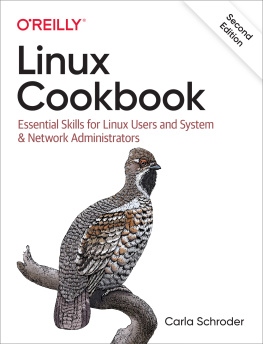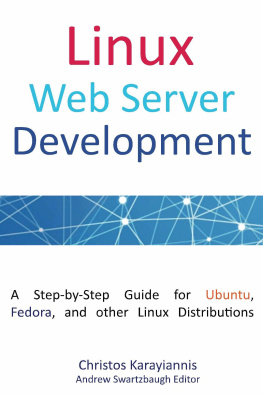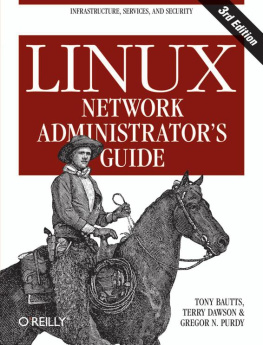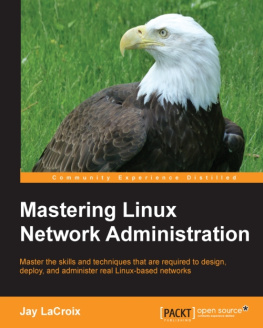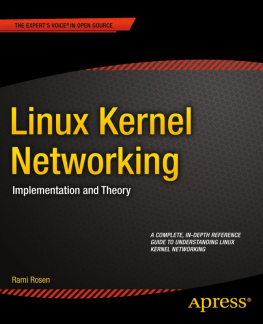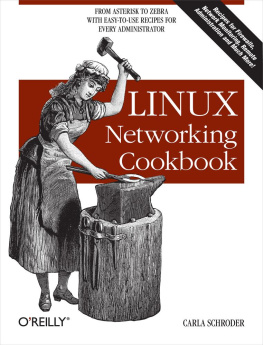,
Introduction to Linux NetworkingThis is your high-level view of computer networking, covering cabling, routing and switching, interfaces, the different types of Internet services, and the fundamentals of network architecture and performance.
,
Building a Linux Gateway on a Single-BoardIn which we are introduced to the fascinating and adaptable world of Linux on routerboards, such as those made by Soekris and PC Engines, and how Linux on one of these little boards gives you more power and flexibility than commercial gear costing many times as much.
,
Building a Linux FirewallLearn to use Linux's powerful iptables packet filter to protect your network, with complete recipes for border firewalls, single-host firewalls, getting services through NAT (Network Address Translation), blocking external access to internal services, secure remote access through your firewall, and how to safely test new firewalls before deploying them on production systems.
,
Building a Linux Wireless Access PointYou can use Linux and a routerboard (or any ordinary PC hardware) to build a secure, powerful, fully featured wireless access point customized to meet your needs, including state-of-the-art authentication and encryption, name services, and routing and bridging.
,
Building a VoIP Server with AsteriskThis chapter digs into the very guts of the revolutionary and popular Asterisk VoIP server. Sure, these days, everyone has pretty point-and-click GUIs for managing their iPBX systems, but you still need to understand what's under the hood. This chapter shows you how to install Asterisk and configure Asterisk from scratch: how to create user's extensions and voicemail, manage custom greetings and messages, do broadcast voicemails, provision phones, set up a digital receptionist, do PSTN (Public Switched Telephone Network) integration, do pure VoIP, manage road warriors, and more.
,
Routing with LinuxLinux's networking stack is a powerhouse, and it includes advanced routing capabilities. Here be recipes for building Linux-based routers, calculating subnets (accurately and without pain), blackholing unwelcome visitors, using static and dynamic routing, and for monitoring your hard-working little routers.
,
Secure Remote Administration with SSHOpenSSH is an amazing and endlessly useful implementation of the very secure SSH protocol. It supports traditional password-based logins, password-less public-key-based logins, and securely carries traffic over untrusted networks. You'll learn how to do all of this, plus how to safely log in to your systems remotely, and how to harden and protect OpenSSH itself.
,
Using Cross-Platform Remote Graphical DesktopsOpenSSH is slick and quick, and offers both text console and a secure X Windows tunnel for running graphical applications. There are several excellent programs (FreeNX, rdesktop, and VNC) that offer a complementary set of capabilities, such as remote helpdesk, your choice of remote desktops, and Linux as a Windows terminal server client. You can control multiple computers from a single keyboard and monitor, and even conduct a class where multiple users view or participate in the same remote session.
,
Building Secure Cross-Platform Virtual Private Networks with OpenVPNEveryone seems to want a secure, user-friendly VPN (Virtual Private Network). But there is a lot of confusion over what a VPN really is, and a lot of commercial products that are not true VPNs at all, but merely SSL portals to a limited number of services. OpenVPN is a true SSL-based VPN that requires all endpoints to be trusted, and that uses advanced methods for securing the connection and keeping it securely encrypted. OpenVPN includes clients for Linux, Solaris, Mac OS X, OpenBSD, FreeBSD, and NetBSD, so it's your one-stop VPN shop. You'll learn how to create and manage your own PKI (Public Key Infrastructure), which is crucial for painless OpenVPN administration. And, you'll learn how to safely test OpenVPN, how to set up the server, and how to connect clients.



